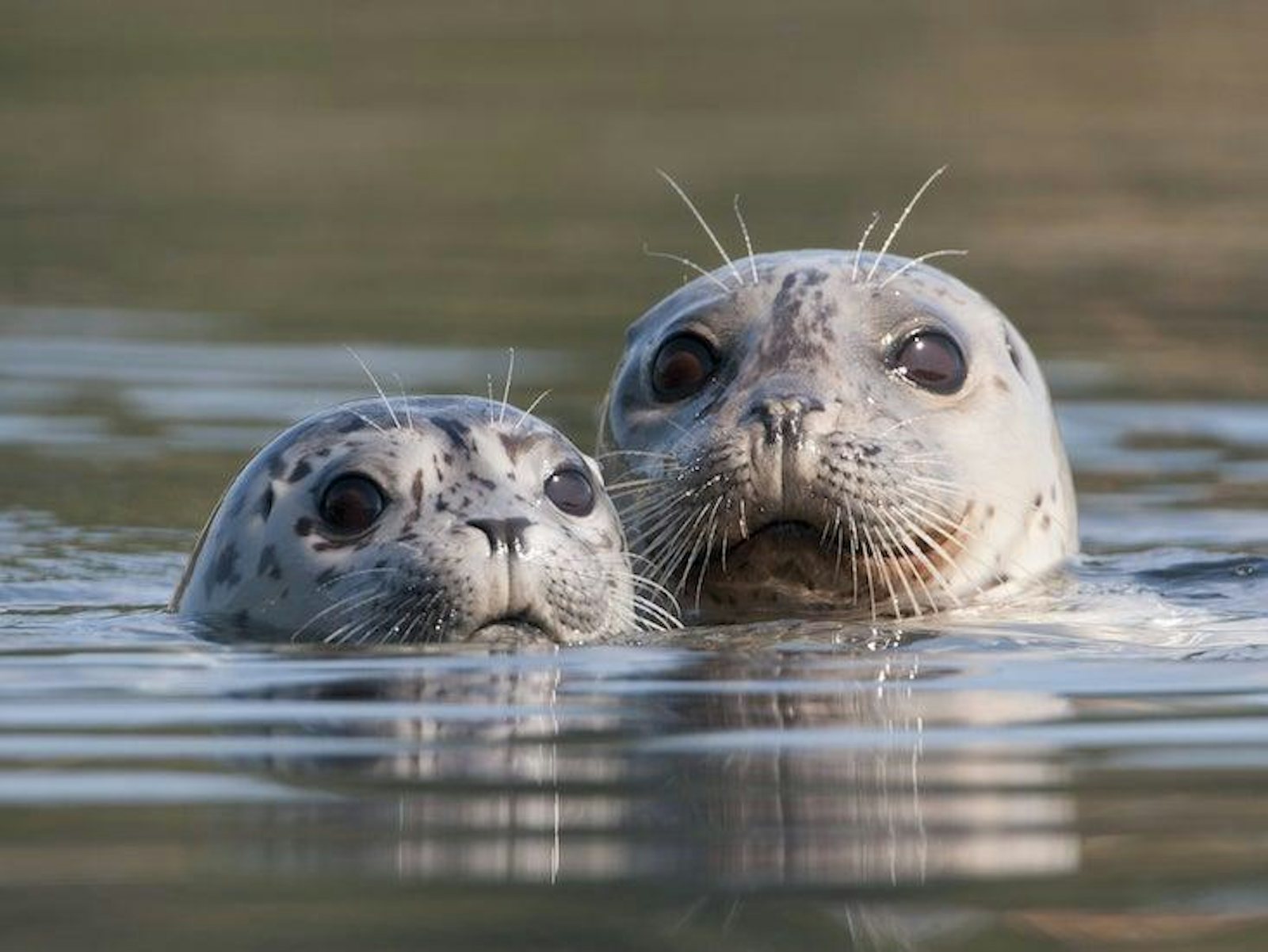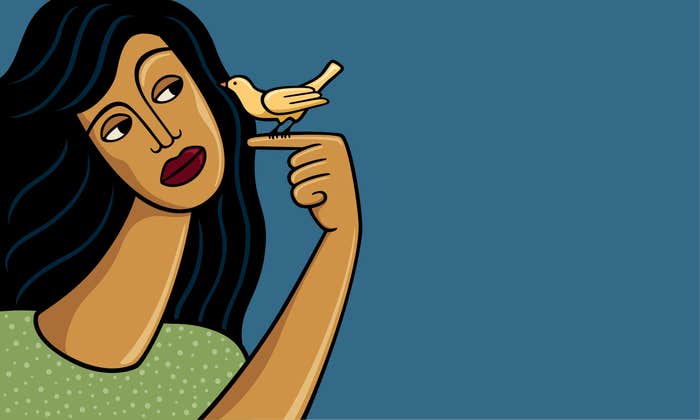Needing to clear my head, I went down to the Penobscot River. There they were, swimming with the mergansers, following an early pulse of river herring to the mouth of Kenduskeag stream: two harbor seals, raising sleek round heads for a few long breaths before rolling under the waves.
Evidently it’s not uncommon for seals to swim the couple dozen miles between Bangor, Maine, and the Atlantic Ocean, but I’d never seen them here before. They were a balm to my buzzing thoughts: What happens next? Will I become a vector of death to my elderly mother? Is the economy going to implode? For a precious few minutes there were only the seals and mergansers and the fish who drew them there, arriving as the Penobscot’s winter icepack broke and flowed to sea, a ritual enacted ever since glaciers retreated from this continental shelf.
In the months ahead we can look to nature for these respites. The nonhuman world is free of charge; sunlight is a disinfectant, physical distance easily maintained, and no pandemic can suspend it. Nature offers not just escape but reassurance.
In 1946, in the aftermath of World War II, with the Nazi threat vanquished but the Cold War looming, George Orwell welcomed spring’s arrival in London’s bombed-out heart. “After the sorts of winters we have had to endure recently, the spring does seem miraculous, because it has become gradually harder and harder to believe that it is actually going to happen,” he wrote in “Some Thoughts on the Common Toad.” “Every February since 1940 I have found myself thinking that this time Winter is going to be permanent. But Persephone, like the toads, always rises from the dead at about the same moment.”
So she does. And so the slumbering earth warms to life. Two nights before the seals, two nights before World Health Organization declared a pandemic, before the NBA shut down with teams on the floor and fans in the seats, before the fright went beyond viral into logarithmic, was the Worm Moon: the full moon named for the imminent stir of earthworms in thawing soil.
The nonhuman world is free of charge; sunlight is a disinfectant, and physical distance is easily maintained.
In burrows beneath leaf litter, hibernating toads prepare to open what Orwell called “the most beautiful eye of any living creature,” resembling “the golden-coloured semi-precious stone which one sometimes sees in signet rings, and which I think is called a chrysoberyl.” Nearly as beautiful are the eyes of painted turtles waiting on pond bottoms here in eastern Maine, the ice above now retreating from shore, mallard couples dabbling in newly open water.
The birds are the surest sign of spring’s imminence. Downtown the house finches are holding daily concerts. Starlings are starting to replace their gold-streaked winter plumes with more iridescent garb. In the street today I saw two male mockingbirds joust above the pavement, their white wing-bars fluttering territorial semaphores, abandoning the contest only when a car nearly ran them down.
There are many quieter signs, too: pale tips of shrubs poised to grow, a spider rappelling off a low branch, fresh fox scat in the driveway. It’s red from apples preserved under snow and lined with the fur of field mice and meadow voles whose secret winter tunnels are now revealed in the grass. Somewhere soon mother fox will give birth, nursing her blind hairless charges in underground peace.
Eastern comma butterflies will gather on the trunks of those apple trees and sip their rising sap. Not long after the first orange-belted bumblebee queens will appear, inspecting potential nest sites under fallen leaves and decomposing logs. Warm rainy nights will bring salamanders and newts, just a few spotted glistening inches long, some of them decades old, out from woodland hidey-holes and down ancient paths to vernal pool bacchanals held amidst a chorus of spring peepers. Woodland ephemerals will bloom in sunshine unfiltered by still-bare treetops. My favorite are trout lilies, colonies of which illuminate forest floors with a sea of bright yellow blossoms, petals falling once the canopy unfurls.
“The atom bombs are piling up in the factories, the police are prowling through the cities, the lies are streaming from the loudspeakers,” Orwell wrote, “but the earth is still going round the sun.”
At this point there’s no end of studies showing how nature is good for our health, how patients recover faster in hospital rooms with windows overlooking trees, how a mindful walk in the woods will lower stress and raise moods. All true, but at this moment something deeper and more urgent is offered. An affirmation of life.
Will the nightmare scenes out of Italy and Spain and now New York City spread across the land? How long will the pandemic last? Will it completely rend our already tattered social fabric? When can I again play hockey or go to a coffee shop or use a credit card machine without feeling like I’m risking my own and other lives? Who will die? Nobody knows for sure, but in a few weeks the swallows will arrive, and tonight above the fields at dusk I heard the cries of woodcock.
Secretive, ground-dwelling birds with limpid black eyes and long, slender beaks attuned to the frequencies of earthworm-rustles, their feathers blend perfectly with leaf litter and old grass. They rely on this camouflage, going still rather than fleeing a walker’s approach, taking wing only as a last resort.
When they do, their flight is notable for its slowness and the quavering whistle of their wings. At no other time than in spring do they dare draw attention, much less put on a show: calling out, with an urgent nasal buzz best described as a peent, and flying straight upward before spiraling against a darkening sky.
Brandon Keim is a freelance nature and science journalist. The author of The Eye of the Sandpiper: Stories from the Living World, he’s now writing Meet the Neighbors, forthcoming from W.W. Norton & Company, about what it means to think of wild animals as fellow persons—and what that means for the future of nature.
Photograph by Tim Zurowski / Shutterstock




























